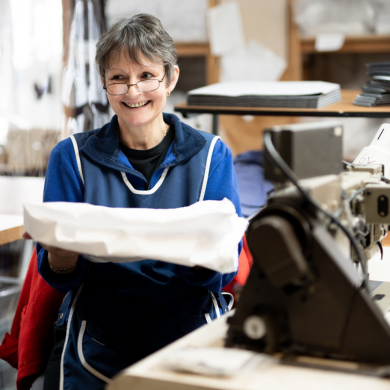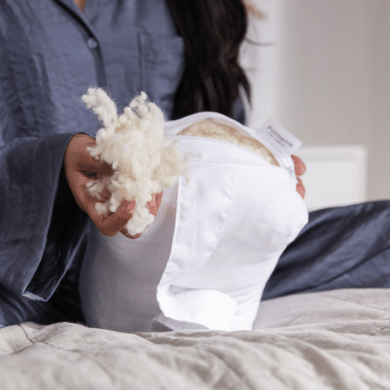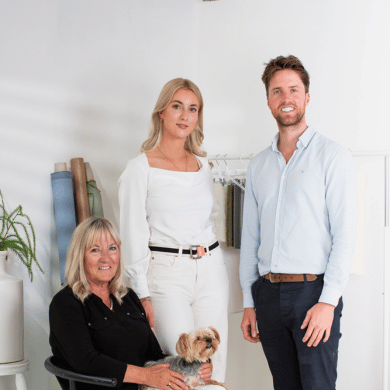
Sleep Tape: Does It Work and What Should You Pair It With
Have you heard of mouth taping? From social media influencers to wellness enthusiasts, it seems like everyone is buzzing about this intriguing sleep trend. The concept is simple yet compelling: apply a strip of adhesive tape over your lips to encourage nasal breathing while you sleep. Proponents say it can reduce snoring, optimise breathing, and even improve overall sleep quality.
But does sleep tape really work, and is it safe for everyone?
This blog explores the fascinating world of sleep tape, addressing its benefits, safety, and limitations.
We’ll also look at complementary sleep-positioning products, including breathable natural pillows, CPAP pillows, and wedge supports, to help you amplify the potential benefits of mouth taping.
What Is Mouth Taping and Why Is Everyone Doing It
Mouth taping is exactly what it sounds like. It involves placing medical-grade adhesive tape over your lips before going to sleep.
The primary goal? Promoting nasal breathing instead of mouth breathing. Advocates claim this approach has several health perks, from reducing dry mouth to improving sleep quality.
Why Is Nasal Breathing Better?
Breathing through your nose does much more than oxygenate your body.
It filters and humidifies the air you breathe, maintaining healthy moisture in the respiratory system. Nasal breathing is also better at regulating airflow and is less likely to create dryness or irritation. Many people who mouth-breathe at night wake up parched or even feeling fatigued, as mouth breathing can often deprive the body of optimal oxygen levels.
See also - Your Guide to Healthy Sleep Habits and Finding Your Ideal Sleep Position
Is Sleep Tape Safe and Effective?
The Science Behind It
While mouth taping has gained plenty of anecdotal praise online, scientific research on its benefits is still in its infancy. A few small studies suggest that sleep tape can help reduce snoring and even benefit those with mild sleep apnoea.
However, efficacy often depends on individual circumstances, such as whether you suffer from nasal obstructions or intricate sleep-related conditions. (Nocturnal mouth-taping and social media: A scoping review of the evidence.)
Risks and Caveats
Mouth taping is not without risks.
If you have congestion, sinus issues, or severe snoring linked to sleep apnoea, taping your mouth could exacerbate the issues rather than solve them.
Some common side effects of mouth taping include:
- Difficulty breathing during sleep
- Anxiety or feelings of claustrophobia
- Skin irritation or discomfort upon removing the tape
If you feel unsure about introducing mouth taping into your routine, consult with a healthcare professional before trying it out.
Who Should Avoid Mouth Taping?
Although sleep tape can work for many, it’s not a universal solution. Those who should avoid mouth taping include:
- Individuals who suffer from severe nasal congestion or blockages
- People with sleep apnoea (unless otherwise directed by a physician)
- Those prone to anxiety or claustrophobia
- Anyone with severely chapped or sensitive skin around the mouth
If you fall into any of these categories, consider exploring other options for improving nasal breathing at night.
See also - Sleep Apnoea Myths Debunked: Separating Fact from Fiction
How Pillows and Positioning Can Support Sleep Tape Results
Mouth taping can be even more effective when paired with the right sleep aids.
Your sleeping position, the type of pillow you use, and overall sleep setup can significantly influence your results. Here are three products that make an excellent match with sleep tape:
1. Breathable Natural Pillows
Promoting nasal breathing starts with proper head and neck support. Putnams' breathable natural pillows are designed with comfort and airflow in mind, helping encourage continuous nasal breathing throughout the night.
2. CPAP Pillows for Enhanced Comfort
For users managing sleep apnoea with CPAP therapy, taping your mouth can reduce air leaks and improve the treatment’s effectiveness. A CPAP pillow like those from Putnams complements mouth taping by providing ergonomic support for CPAP equipment wearers.
3. Wedge Pillows for Better Sleep Positioning
Back-sleeping often contributes to snoring and breathing challenges. Positioning yourself at a slight incline with a wedge support pillow, such as Putnams' UK-made bed wedges, can help open your airways and reinforce the benefits of nasal breathing. Bed wedges are one of the most proven snoring sleep aids around.
See also - The Rise of Sleep Biohacking: What It Really Means and What Works
Final Sleep Tips for Nasal Breathers and FAQs
Mouth taping is just one piece of the puzzle when it comes to better sleep.
Here are some additional tips to enhance your bedtime routine:
- Moisturise Before Taping: Apply lip balm or petroleum jelly to minimise irritation from adhesive tape.
- Practice During the Day: Wear the tape for a short period during the day to get comfortable with the sensation.
- Consider Nasal Strips: If nasal congestion is a problem, try over-the-nose nasal strips to support clearer breathing.
- Maintain Good Sleep Hygiene: This includes consistent sleep schedules, a quiet and dark room, and avoiding caffeine or alcohol before bedtime.
FAQs
Does sleep tape benefit everyone?
No, results depend on individual needs and circumstances, such as nasal health and sleep issues.
What’s the best tape for mouth taping?
Opt for hypoallergenic, medical-grade tapes or specialised sleep tapes designed to minimise irritation.
Does mouth taping work for snoring?
For mild snoring caused by mouth breathing, sleep tape may reduce or eliminate the problem. However, it won’t address snoring caused by structural issues like sleep apnoea.
What is the best pillow for mouth breathers?
Generally, mouth breathers tend to be back sleepers, and whilst the preference is always personal, in the end the Putnams British Wool Bed Wedge Pillow comes highly recommended.
Organic British Wool Bed Wedge Pillow - "I had been looking for a wedge pillow for a while but, as I have asthma and allergies, I needed one which was made of wool as it is naturally hypoallergenic. I was amazed to discover this wedge pillow from Putnams, which is made from British wool. It is perfect and made beautifully, with four zipped compartments to add additional wool if you wish. I'm so impressed, thank you Putnams, for designing a natural wedge pillow." - Philippa L
















Leave a comment